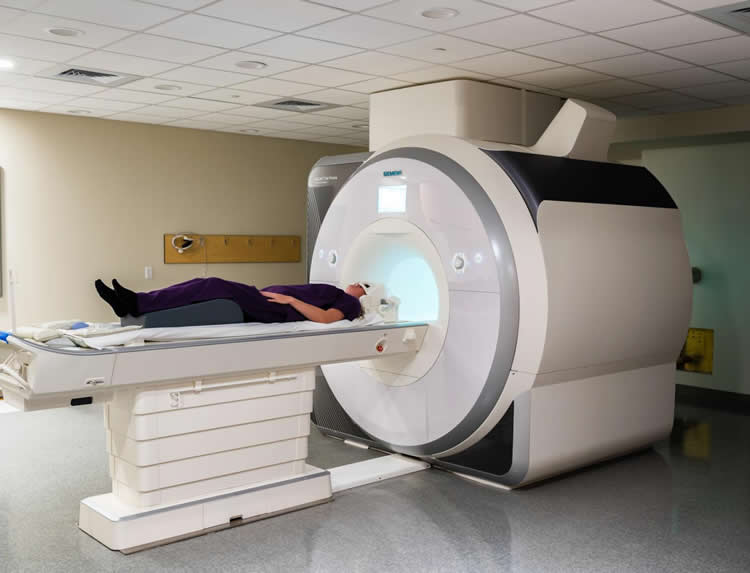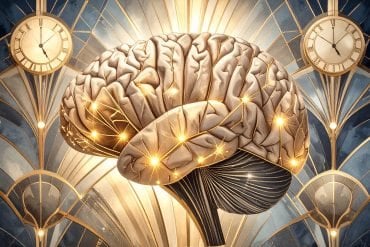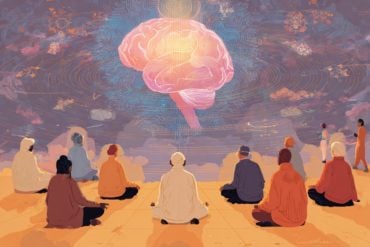Summary: A new neuroimaging study reveals imagination may help people with fear or anxiety disorders overcome them. The study reports imagining a threat can alter the way it is represented in the brain.
Source: University of Colorado at Boulder.
Imagine a barking dog, a furry spider or another perceived threat and your brain and body respond much like they would if you experienced the real thing. Imagine it repeatedly in a safe environment and soon your phobia–and your brain’s response to it–subsides.
That’s the takeaway of a new brain imaging study led by University of Colorado Boulder and Icahn School of Medicine researchers, suggesting that imagination can be a powerful tool in helping people with fear and anxiety-related disorders overcome them.
“This research confirms that imagination is a neurological reality that can impact our brains and bodies in ways that matter for our wellbeing,” said Tor Wager, director of the Cognitive and Affective Neuroscience Laboratory at CU Boulder and co-senior author of the paper, published in the journal Neuron.
About one in three people in the United States have anxiety disorders, including phobias, and 8 percent have Post Traumatic Stress Disorder. Since the 1950s, clinicians have used “exposure therapy” as a first-line treatment, asking patients to face their fears – real or imagined – in a safe, controlled setting. Anecdotally, results have been positive.
But until now, very little has been known about how such methods impact the brain or how imagination neurologically compares to real-life exposure.
“These novel findings bridge a long-standing gap between clinical practice and cognitive neuroscience,” said lead author Marianne Cumella Reddan, a graduate student in the Department of Psychology and Neuroscience at CU Boulder. “This is the first neuroscience study to show that imagining a threat can actually alter the way it is represented in the brain.”
For the study, 68 healthy participants were trained to associate a sound with an uncomfortable, but not painful, electric shock. Then, they were divided into three groups and either exposed to the same threatening sound, asked to “play the sound in their head,” or asked to imagine pleasant bird and rain sounds – all without experiencing further shocks.
The researchers measured brain activity using functional magnetic resonance imaging (fMRI). Sensors on the skin measured how the body responded.
In the groups that imagined and heard the threatening sounds, brain activity was remarkably similar, with the auditory cortex (which processes sound), the nucleus accumens (which processes fear) and the ventromedial prefrontal cortex (associated with risk and aversion) all lighting up.
After repeated exposure without the accompanying shock, the subjects in both the real and imagined threat groups experienced what is known as “extinction,” where the formerly fear-inducing stimulus no longer ignited a fear response.
Essentially, the brain had unlearned to be afraid.
“Statistically, real and imagined exposure to the threat were not different at the whole brain level, and imagination worked just as well,” said Reddan.
Notably, the group that imagined birds and rain sounds showed different brain reactions, and their fear response to the sound persisted.
“I think a lot of people assume that the way to reduce fear or negative emotion is to imagine something good. In fact, what might be more effective is exactly the opposite: imagining the threat, but without the negative consequences,” said Wager.
Previous research has shown that imagining an act can activate and strengthen regions of the brain involved in its real-life execution, improving performance. For instance, imagining playing piano can boost neuronal connections in regions related to the fingers. Research also shows it’s possible to update our memories, inserting new details.

The new study suggests that imagination may be a more powerful tool than previously believed for updating those memories.
“If you have a memory that is no longer useful for you or is crippling you, you can use imagination to tap into it, change it and re-consolidate it, updating the way you think about and experience something,” said Reddan, stressing that something as simple as imagining a single tone tapped into a complex network of brain circuits.
She notes that there was much more variance in brain activity in the group that imagined the tone versus the ones who really heard it, suggesting that those with a more vivid imagination may experience greater brain changes when simulating something in their mind’s eye.
As imagination becomes a more common tool among clinicians, more research is necessary, they write.
For now, Wager advises, pay attention to what you imagine.
“Manage your imagination and what you permit yourself to imagine. You can use imagination constructively to shape what your brain learns from experience.”
Funding: The study was funded by NIH/National Institute on Drug Abuse.
Source: Lisa Marshall – University of Colorado at Boulder
Publisher: Organized by NeuroscienceNews.com.
Image Source: NeuroscienceNews.com image is credited to University of Colorado at Boulder.
Original Research: Open access research for “Attenuating Neural Threat Expression with Imagination” by Marianne Cumella Reddan, Tor Dessart Wager, and Daniela Schiller in Neuron. Published December 6 2018.
doi:10.1016/j.neuron.2018.10.047
[cbtabs][cbtab title=”MLA”]University of Colorado at Boulder”Your Brain on Imagination: It’s a Lot Like Reality.” NeuroscienceNews. NeuroscienceNews, 10 December 2018.
<https://neurosciencenews.com/imagination-reality-10320/>.[/cbtab][cbtab title=”APA”]University of Colorado at Boulder(2018, December 10). Your Brain on Imagination: It’s a Lot Like Reality. NeuroscienceNews. Retrieved December 10, 2018 from https://neurosciencenews.com/imagination-reality-10320/[/cbtab][cbtab title=”Chicago”]University of Colorado at Boulder”Your Brain on Imagination: It’s a Lot Like Reality.” https://neurosciencenews.com/imagination-reality-10320/ (accessed December 10, 2018).[/cbtab][/cbtabs]
Abstract
Attenuating Neural Threat Expression with Imagination
Imagination is an internal simulation of real-life events and a common treatment tool for anxiety disorders; however, the neural processes by which imagination exerts behavioral control are unclear. This investigation tests whether and how imagined exposures to a threatening stimulus, conditioned in the real world, influence neural and physiological manifestations of threat. We found that imagined and real extinction are equally effective in the reduction of threat-related neural patterns and physiological responses elicited upon re-exposure to real-world threatening cues. Network connectivity during the extinction phase showed that imagined, like real, extinction engaged the ventromedial prefrontal cortex (vmPFC) as a central hub. vmPFC, primary auditory cortex, and amygdala activation during imagined and real extinction were predictive of individual differences in extinction success. The nucleus accumbens, however, predicted extinction success in the imagined extinction group alone. We conclude that deliberate imagination can attenuate reactions to threat through perceptual and associative learning mechanisms.






